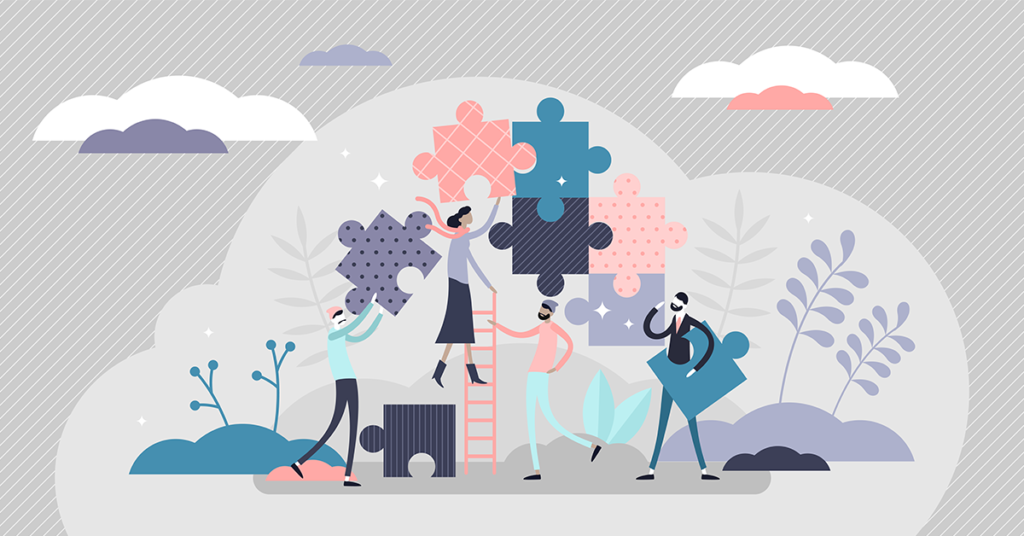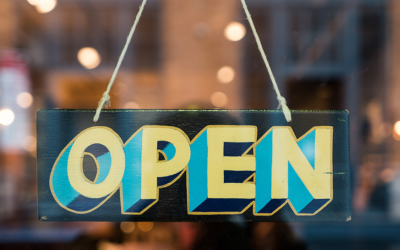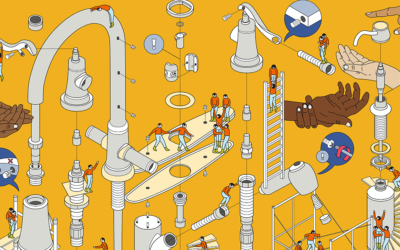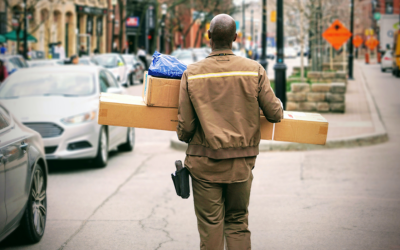Building Community Equity During a Pandemic: 10 Takeaways From a Conversation With Andy Yan, AICP
This article recaps and references the UrbanLogiq webinar, “Managing Equitable Economic Recovery with Andy Yan.” Visit our webinars page to watch the full recording.
As we wade through the challenges and unknowns of the global pandemic, what is clear, and comforting, is we know more today than we did three months ago, and we will know more tomorrow. Data and information are cumulative and upon it we can build knowledge of our new landscape and use it to shape and inform our actions. Now, the disruptions and interruptions spurred by the coronavirus have become a mere backdrop in the face of a worldwide rejection of systemic racism, as demonstrated in one of the most consequential civil rights movements in living memory. We as a global society have decided that our communities must and will be more equitable.
On June 16, I had the pleasure of hosting venerated urban planner and university professor Andy Yan of Simon Fraser University, based in Vancouver, BC, for a conversation about equity. We discussed the principles of equity, building community equity in practice, the role and limitations of data in measuring equity, and how the pandemic uncovered our knowledge gaps but also provided us with an opportunity to do better. Here are the 10 big takeaways from our conversation and some additional thoughts from high-demand questions we did not get to.
1. Data is not destiny, it is direction
Data is really good at describing how things are. However, by itself, data is not a statement of how things will be. Data provides many possible directions, but at the end of the day, the actors on data decide what the destination and the journey will be.
In the time of coronavirus, certain characteristics are not being fully captured or evaluated when looking at the “data.” For instance, today there is a serious debate and call for a resolution about the problems of over-policing. This is not a new debate, but it is boiling over as seen with what’s happening in the streets. If you look deeper into this particular movement, it is not only about defunding the police, but it is about the spending and budget priorities of our local governments. It is about looking at the social determinants of health before their effects hit the justice system. More holistic approaches can be informed by integrating different data sets like health care and other indicators of overall wellbeing can help us better prepare and intercept poor performance earlier when we consider broader aspects of the lived experiences of different people and groups. Over policing is a product of failures of our society and looking at data sets, like crime, in complete isolation.
2. Qualitative data that tells a story is just as important as quantitative data
We need to understand the power of narrative when considering data. If data by itself truly mattered, then we would not have climate change, no one would smoke, and my cholesterol level would be 10 points down. How does this fit into one’s story? This is really part of the role of data being incorporated into these narratives. Success of leaders is to build and publicize data and complexity through storytelling.
3. Be like water
In a time of complete unknowns about the future, the most we can do is what we can with the information we have at the time. The pandemic is constantly evolving, and we are learning more every day; to be like water is to be able to change when the data changes but to also be strong in convictions and decision making through data “noise.”
We are in this together; we depend on each other. But we must also acknowledge and embrace the fact that the pandemic and our broader societal changes will affect us all differently. Being and embracing difference will mean we must be agile about our bold solutions. Change will happen both along and across lines of how human beings identify themselves.
4. Equity is a process not a sole outcome \\ Economics is only one measure of equity
What “should” be done. Data gets caught up in what and how. Actually *why* are we doing this? Why are we building community equity and working to achieve economic equity? What are the outcomes we are looking for? Start with why and work backwards. As a process it’s an infinite game.
The idea of building community equity doesn’t have an end, but rather is a commitment that incurs a lifetime. For all of the successes that we’ve seen in the civil rights movement and acknowledgement of indigenous rights and immigrant culture and society – this is only the beginning of the journey of equity. Economic equity is only one aspect. We can go back to spatial justice – how do we view justice?
But it’s also a question of relationships. Whole aspect of relationships between groups matters. Operationalizing this is close to history and lived experiences of different people.
5. Data is powered by ethics
Data is built and powered by a foundation of ethics. Proper and effective use means strong accountability and transparency. We are living in a world that has been significantly affected by deliberate abuses in the past, such as redlining in the United States and Japanese internment and residential schools in Canada.
Without this ethical framework, we will be unable to use data for anything productive. The lack of ethical frameworks and tabooing of certain topics has meant we are chronically reluctant to use data to help understand really hard messy problems. Our statistics bureaus are reluctant to capture data on ethnicities, culture; we are especially reluctant to collect data at micro geographies. We have a strong tendency to look at trends at the regional or provincial/state level. Without this data, it will be extremely difficult to understand and quantify the extent of uneven effects that economic recession has on businesses owned by different groups.
6. Work from home: an opportunity to rethink, reform land use and zoning
Perhaps the real challenge of urban planning in the 21st century is isolation versus connectivity. The ideas of isolation actually don’t work, as was the goal of original zoning and land use to separate and to minimize externalities. Today, the challenge is to allow for connectivity to occur whether that be economic, social, or digital. Economic inequity is isolation – people might not be well connected to jobs; economic equity is connectivity – people have access to high speed internet and sound public transit. We need this level of connectivity.
At best, 60% of the economy can work from home now, and there will continue to be a sizeable population who cannot. For the people who can work from home, there will continue to be shifts and more people might want to work from home or work from home more regularly. Hopefully this will mean more people will attain a work-life balance where it is no longer mandatory to commute 45-60 minutes every day. This new change has prompted us to rethink how neighborhoods are built. Postwar neighborhoods built around the car are slowly being rebuilt over time to focus on pedestrians and active transportation. The pursuit of affordable housing is actually also a pursuit of reducing commutes from a major employment center. As we work on building community equity, urban planners are going to need to begin to grapple with “temporal principles” and allowing neighborhoods and cities to work and connect people across space and time.
7. Public institutions/amenities and connections to them as an essential service and crucial to equity
In a time where connectivity and building community equity is so important, the pandemic has made us temporarily close centers of community togetherness and resources. In particular, a fact that COVID-19 has exacerbated and accelerated further, is the severity and expanse of the digital divide. As we rebuild, we should focus on people but also how we better integrate with place and networks. This applies to transportation networks but also data networks. The digital divide has made responding to COVID-19 particularly difficult in lower income communities without access to broadband where thousands of students are unable to do their schoolwork from home.
There are now created digital deserts across North America. Increasingly it is a growing theory of the central, evolving role of the public library, or known to others as a palace for the people. The public library can become our new center of a digital commons. You might not have high speed Internet in your homes, but you will have it at your local library – socially distant for the time being of course. One priority now could be ensuring all communities have their local public library and that it has access to high speed internet.
When we’re talking about building community equity, physical distance and access to institutions be they libraries, community centers, town halls, public transportation, hospitals and care centers, and with that institutions that offer services in spoken languages of the people around them, is one strong measure of equity.
8. We need data that embraces, acknowledges difference and detail
What we definitely know after four months of pandemic is that its effects have been asymmetric across industry, ethnic group, and income level. In fact, minority and women-owned businesses have been hurt particularly hard. These things are not well captured in the data because they simply are not being tracked.
The data we need now is data that acknowledges difference and captures detail. Data that seeks to engage differences in groups, in places, and then goes on to describe how they are different in detail. In the real world, people live in neighborhoods. Neighborhoods are the geographic unit we are most familiar with. Our daily experiences are anchored by the neighborhood. To build community equity, we should seek to measure it more.
9. The post-COVID-19 era will require cultural adaptation
Cultural adaptation and normalization of new behavior will come with the post-COVID-19 era and we will have to plan for it. The concept of wearing masks is not only about biomedical security but also about being a polite and considerate person. Keeping at least 2 meters/6 feet away from people or restaurateurs keeping their dining room less crowded. We are also going to have to line up more for things and be patient. Clean things more regularly. These are all new and something we are all still getting used to, because at the end of the day, we are all in this together and it is the least we can do to help protect ourselves and our neighbors.
10. Black Lives Matter, Civil Rights, and COVID-19: We must face pre-existing conditions, change ourselves, and measure progress
So far, we have already touched on slightly how COVID-19 is the great accelerator. COVID-19 has forced us to acknowledge the presence and urgency of pre-existing conditions. Black Lives Matter is telling us we do not have this right yet. We must always ask “Who might not be at the table?” and welcome them to the table or bring the table to them. We must leave a space when it comes to any aspect of public planning because these decisions are not menial; they are generational changes that last as you can see from our mistakes of the past. We must enter these realms with humility, and we must understand that there is a limit to what we know, and we will beat those limits with openness and listening to sources that we might not typically listen to or go to. This movement is forcing us to be more open minded and look at our traditions and comforts critically. If your answer to “why?” is that it is “the way we have always done things”, that is your signal to look at improving it. The new challenge is dethroning status quos that are around us. It will be difficult, there will be mistakes, but it will be worth it. This is the great project.



